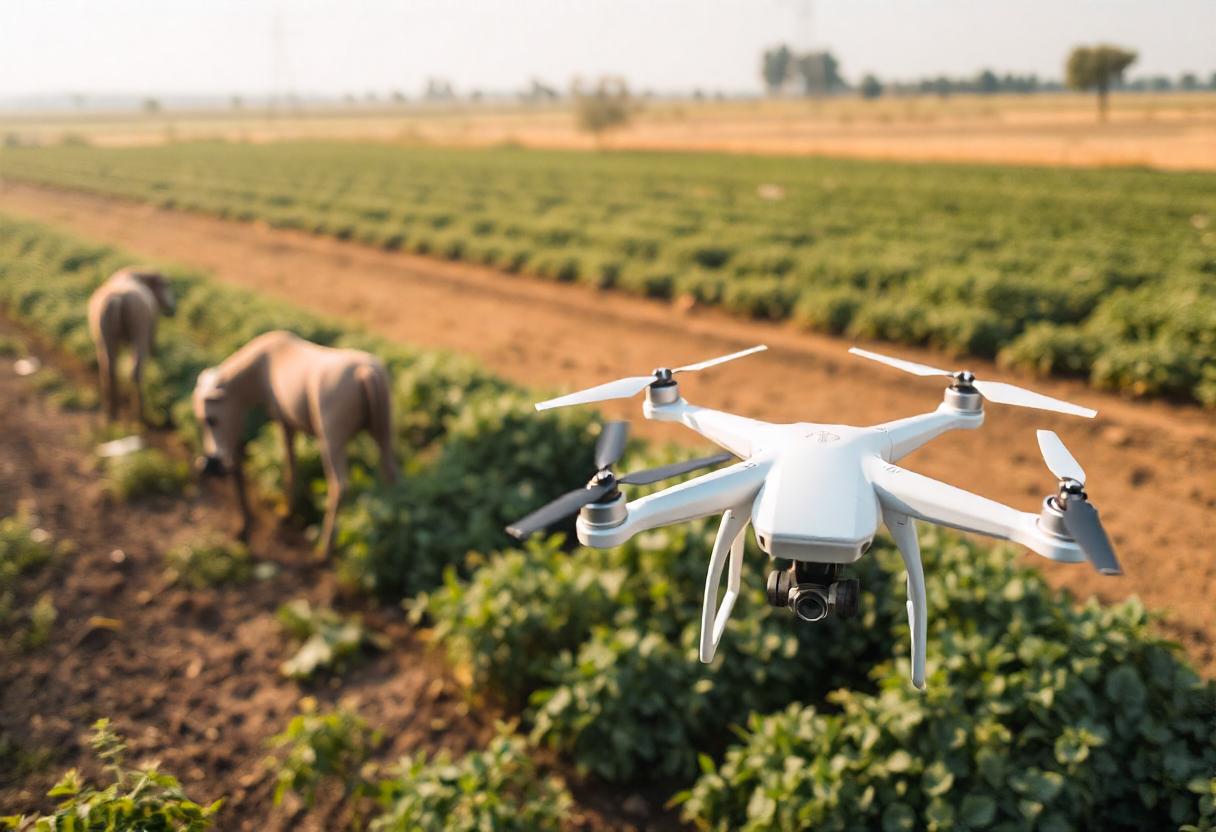
Introduction
Drones have revolutionized several industries, and agriculture is no exception. The integration of drone technology into farming practices has improved efficiency, crop management, and resource utilization. This innovation has brought about new possibilities for precision farming, helping farmers make data-driven decisions that enhance productivity and sustainability.
Crop Monitoring and Health Assessment
Drones equipped with advanced sensors and cameras allow farmers to monitor crop health with incredible precision. By flying over vast fields, drones can capture high-resolution images and detect problems such as water stress, pest infestations, or nutrient deficiencies. This real-time data helps farmers take timely corrective measures to prevent crop loss and improve overall yield.
Precision Agriculture
One of the most significant advantages of drones in agriculture is their role in precision farming. Precision agriculture involves the use of technology to apply inputs such as fertilizers, pesticides, and water in the right quantities at the right time. Drones help farmers map fields accurately, analyze soil health, and identify areas that need attention. This reduces waste, lowers costs, and minimizes environmental impact by avoiding overuse of chemicals.
Irrigation Management
Drones assist in optimizing water usage through efficient irrigation management. Equipped with thermal cameras, drones can detect moisture levels in the soil, identifying areas that require more or less water. This targeted approach ensures that water is applied where it’s needed most, reducing waste and conserving this valuable resource.
Pest Control and Spraying
Drones are increasingly being used for pesticide and fertilizer application. They provide a faster and more efficient method compared to traditional ground-based machinery. With drones, spraying can be done more uniformly and in hard-to-reach areas, reducing the labor required and minimizing human exposure to harmful chemicals. The ability to cover large areas quickly also helps control pests and diseases more effectively.
Livestock Monitoring
In addition to crop management, drones are also used for monitoring livestock. By flying over large grazing areas, drones can track the movement of animals, ensuring they are healthy and within designated boundaries. This technology reduces the need for manual labor and makes it easier to manage livestock over vast and difficult terrain.
Data Collection and Analysis
Drones not only collect visual data but also utilize various sensors such as multispectral, thermal, and LiDAR to gather comprehensive information about the farm. This data is then analyzed using artificial intelligence and machine learning algorithms to provide actionable insights. Farmers can assess the condition of crops, forecast yields, and make better decisions based on accurate information, ultimately leading to more efficient farm management.
Soil and Field Analysis
Before planting, drones can be used to conduct soil and field analysis to help farmers understand the terrain. By creating 3D maps of the land, drones can identify irregularities in the soil that may affect crop growth. This allows for better planning of irrigation systems and planting strategies, ensuring optimal crop conditions from the start.
Cost-Effectiveness and Labor Savings
The use of drones in agriculture significantly reduces labor costs by automating tasks that would otherwise require manual intervention. Drones can cover large areas in a short amount of time, and the detailed data they provide reduces the need for repeated manual checks of crops and soil. This technology also minimizes the need for expensive machinery and input materials, making farming more cost-effective.
Challenges and Limitations
Despite the numerous benefits, the use of drones in agriculture is not without challenges. High initial costs, the need for specialized training, and regulatory restrictions in some areas can limit adoption. Additionally, drones have limited battery life and may struggle to cover extremely large farms. However, advancements in drone technology are expected to address these challenges, making them even more accessible to farmers worldwide.